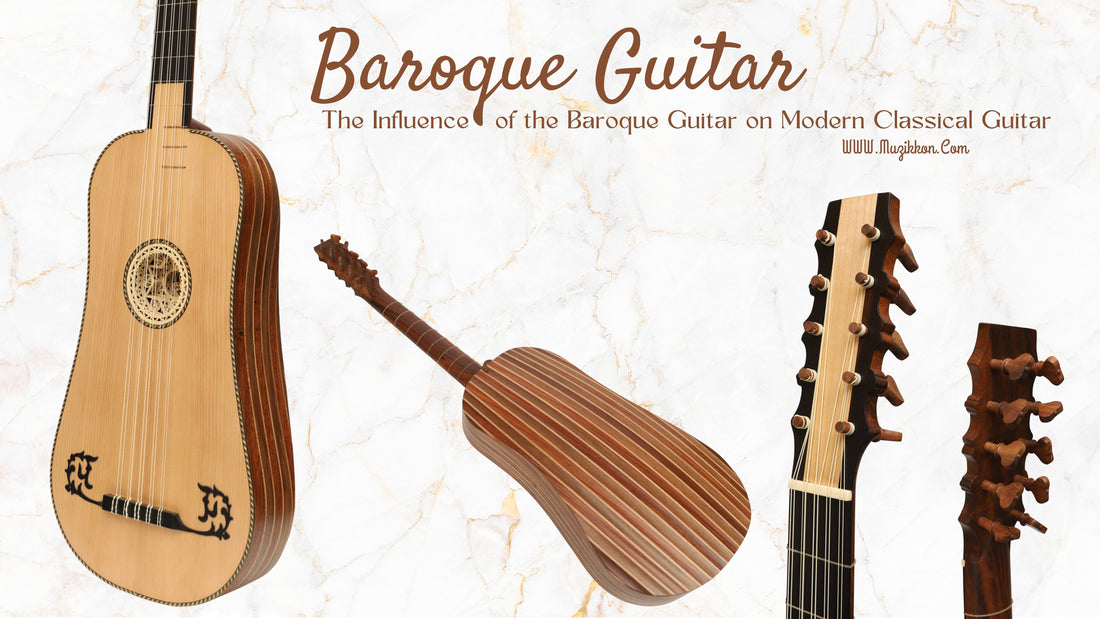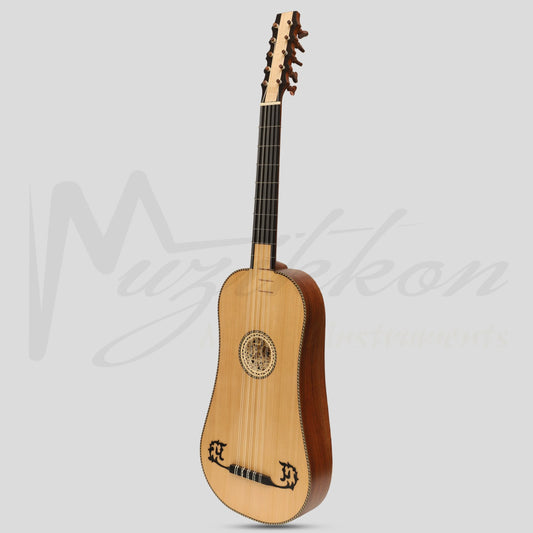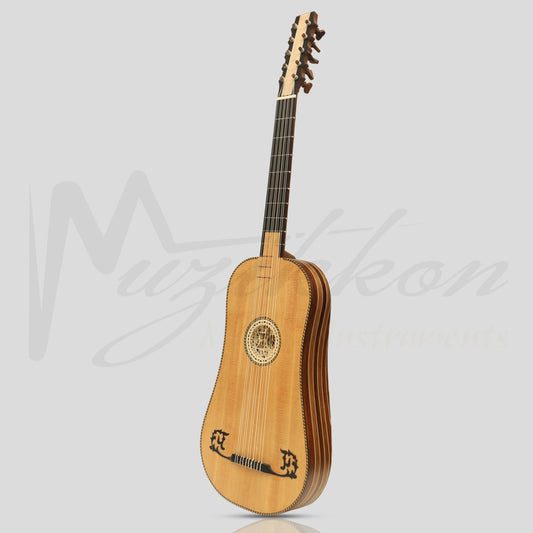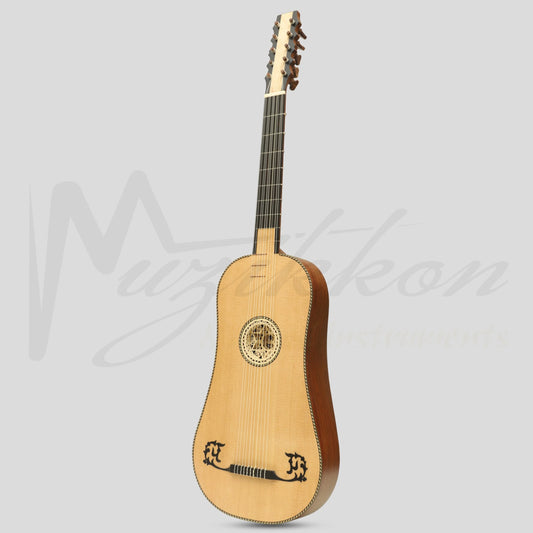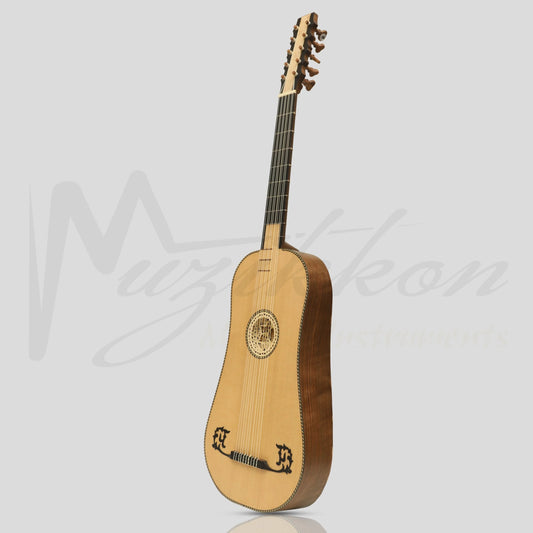The evolution of the classical guitar owes much to its predecessor, the Baroque guitar. The transition between these two instruments marks a significant transformation in musical styles, construction techniques, and playing methods. By exploring the history, structure, and impact of the Baroque guitar, we can better understand its influence on modern classical guitars.
The Baroque Guitar: A Bridge Between Eras
The Baroque guitar emerged in the late 16th and early 17th centuries, gradually replacing the Renaissance lute as a preferred instrument in European music. It became highly popular during the Baroque period, played by composers and musicians across Spain, Italy, and France.
Features of the Baroque Guitar
Body Shape: The Baroque guitar had a smaller, more elegant body compared to modern guitars.
Strings: It featured five courses (pairs) of gut strings, which contributed to a rich and resonant sound.
Decoration: Many Baroque guitars were ornately decorated, featuring intricate rosettes and inlays.
Playing Technique: Strumming patterns, known as rasgueado, were developed and widely used alongside plucked fingerstyle techniques.
The Transition to the Modern Classical Guitar
During the 18th and early 19th centuries, the Baroque guitar underwent significant modifications that eventually led to the modern classical guitar. Some key developments included:
- The shift from five-course strings to six single strings.
- A larger body for increased volume and sustain.
- The introduction of fixed metal frets instead of tied gut frets.
- Advances in tuning and bracing systems, such as the fan bracing technique popularized by Antonio Torres.
These innovations allowed for greater dynamic range, projection, and versatility, making the classical guitar suitable for solo performances and orchestral settings.
Key Differences Between Baroque and Classical Guitars
| Feature | Baroque Guitar | Modern Classical Guitar |
| Body Shape | Smaller, more ornate | Larger, designed for greater projection |
| Strings | Five courses of gut strings | Six single nylon or gut strings |
| Playing Style | Strumming (rasgueado) and plucking | Primarily fingerstyle playing |
| Frets | Tied gut frets | Fixed metal frets |
| Sound | Delicate and bright | Warm, resonant, and dynamic |
The Baroque Guitar’s Legacy in Modern Music
Despite being replaced by the classical guitar, the Baroque guitar's influence is still evident today. Many classical guitar techniques, such as fingerpicking patterns and intricate melodic lines, were developed during the Baroque period. Additionally, Baroque compositions for the guitar, including works by Gaspar Sanz and Robert de Visée, remain a vital part of the classical guitar repertoire.
For those interested in historical guitars, the baroque guitars available at Muzikkon offer authentic reproductions of these beautiful instruments.
Conclusion
The Baroque guitar played a crucial role in shaping the modern classical guitar, influencing its structure, playing styles, and musical possibilities. Whether you're a performer, historian, or collector, exploring the heritage of the Baroque guitar provides valuable insight into the evolution of stringed instruments. If you're looking for high-quality historical and modern guitars, you can browse musical instruments at Muzikkon for a curated selection of baroque guitars and acoustic guitars for sale.

